It’s 2024. Content marketing is table stakes. Everyone knows it. Everyone does it.
And in the age of AI, that means there’s more content and more noise than ever before.
In the past you could get away with some half-hearted content marketing, but the days of putting your strategy on autopilot are over.
The tactics that worked even two or three years ago will continue to deliver diminishing results — and this applies especially to conversions on your website.
So, how do you actually convert website visitors in 2024? Depending on what you’re currently doing, here’s what you should STOP, START, and KEEP.
How to improve website conversions in 2024: Stop, Start, Keep
Before we dive in, it’s important to remember what a conversion is. It’s a transaction. A visitor is giving you something to get something in return.
And while conversions are important, we can’t trick ourselves into thinking they’re the true goal of our marketing.
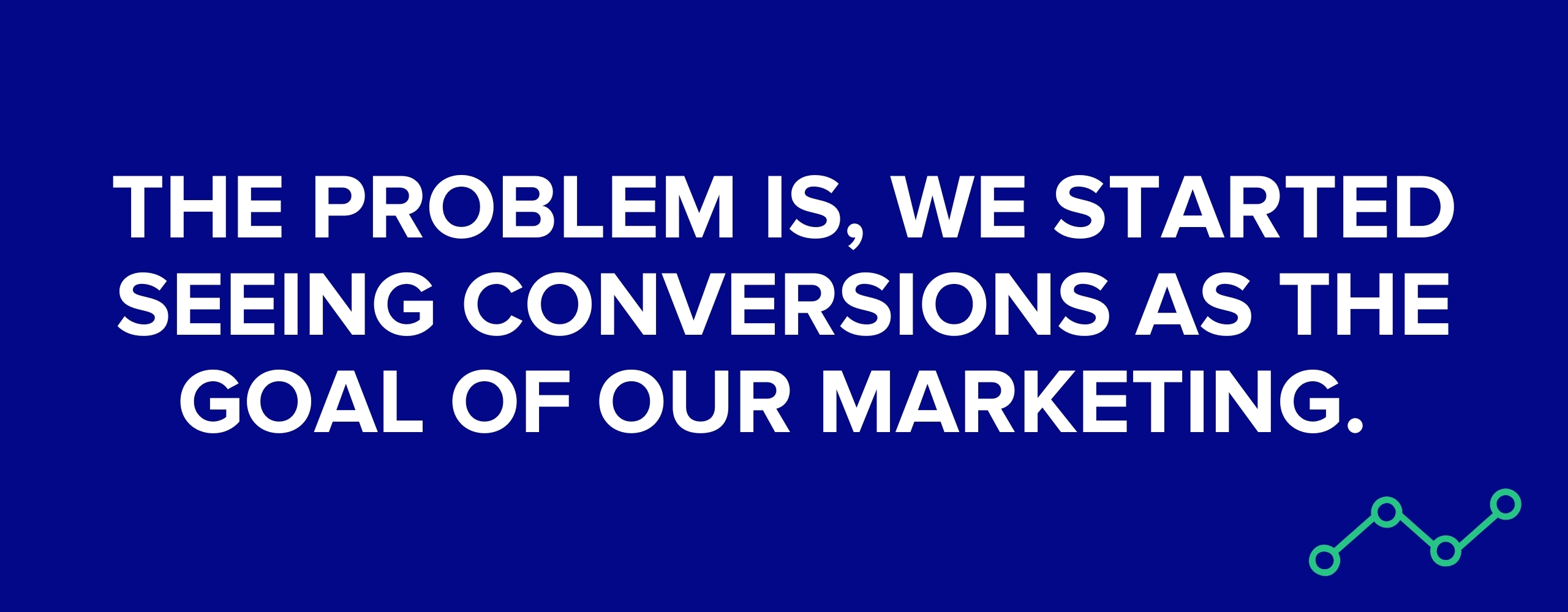
If we optimize for conversions without putting our customers’ needs first, we’ll try to coax conversion with sub-par content and fluffy promises.
The purpose of your website is to help your visitors find what they need to become customers. You do this by educating and building trust. Full stop.
Keep that in mind as you read below.
STOP: Talking about yourself
This is where it all begins. When someone gets to your website, whether organic or direct, they’re looking for a company that gets them.
But what do they see? Nine times out of 10, they see a company that loves to talk about itself:
We offer…
Our proven formula…
We’ve been recognized…
Our staff…
I’m still amazed at how often I see this on websites. Companies fall into the familiar routine of talking about themselves instead of their customers.
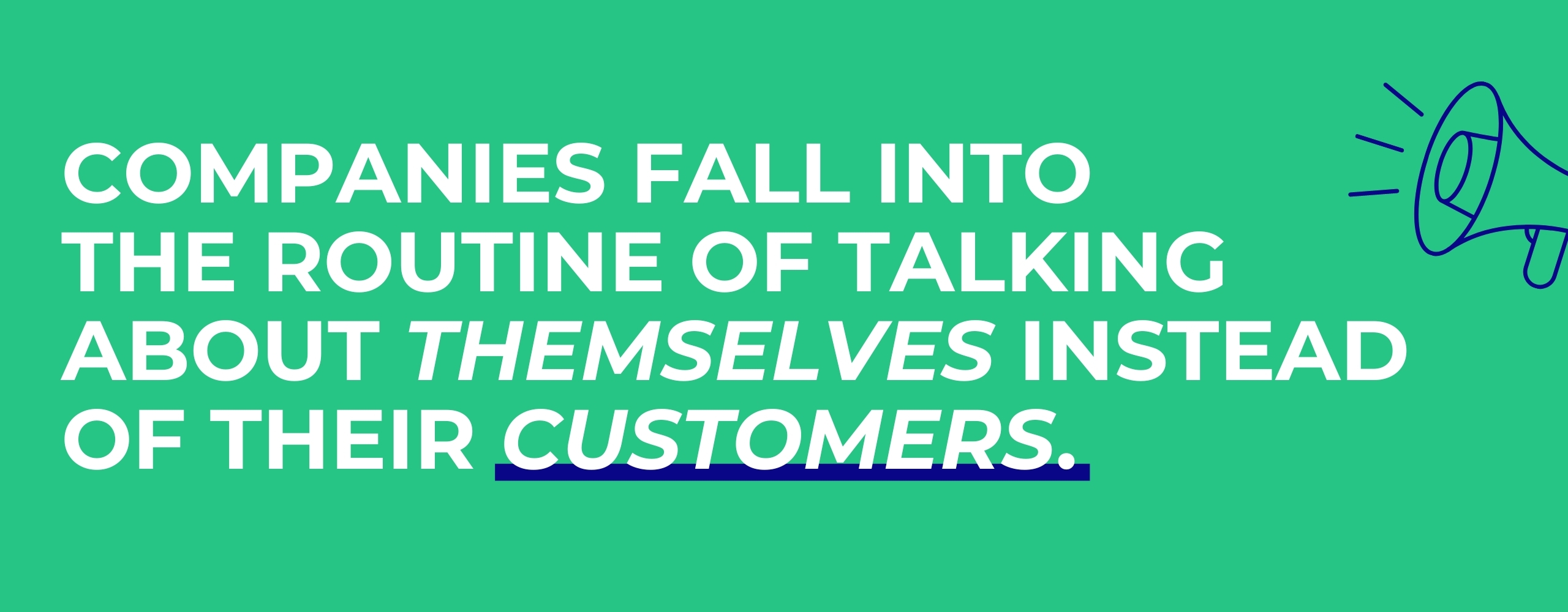
Look at these examples from major brands, both B2B and B2C.
Notice instead of feature-dumping or jamming their copy full of “us” and “we” they offer a simplified explanation of how their customers benefit from choosing their company.
Airtable
All-Clad
Issuu
Leica
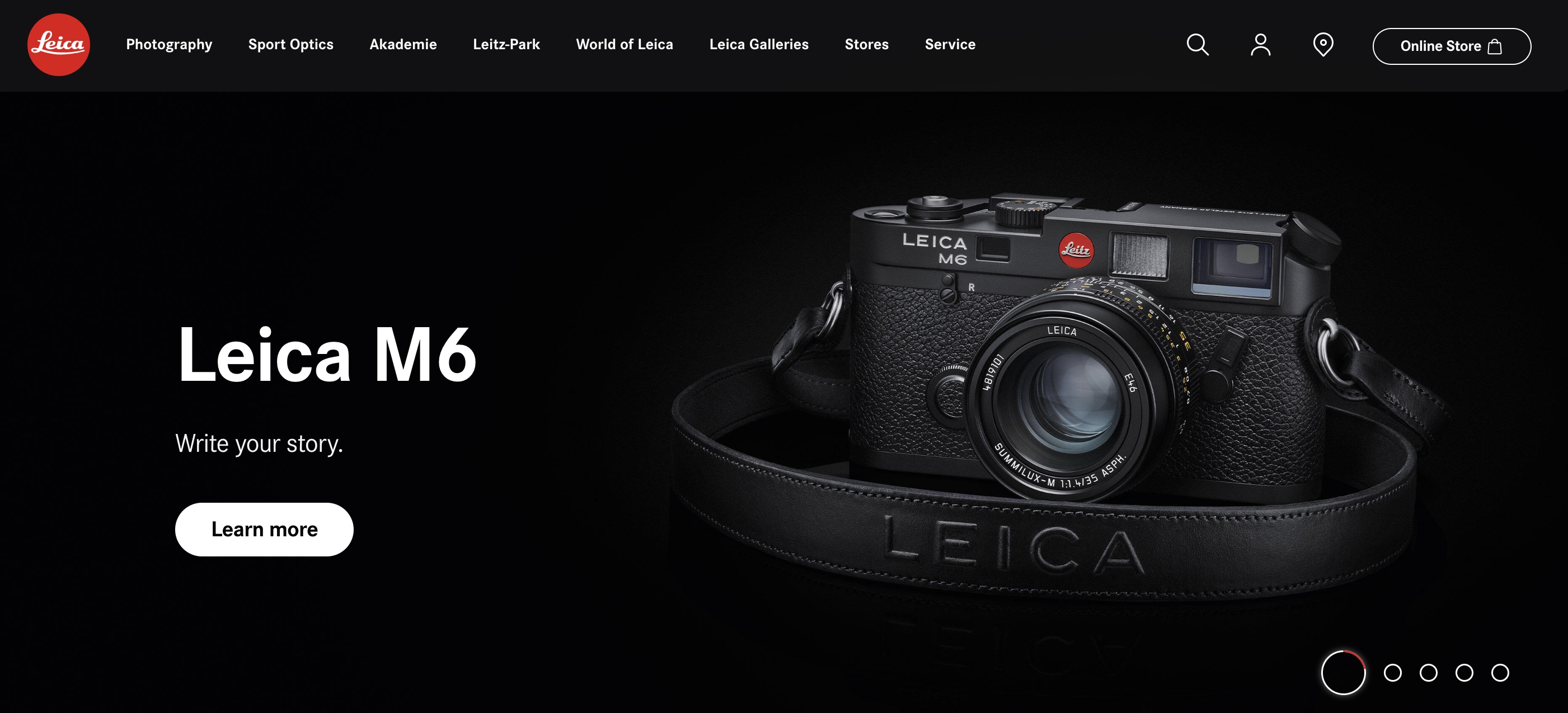
All too often, I see business websites jam-packed with copy that sounds like it’s the company’s resume. I promise you this does not have the effect you're looking for.
STOP: Relying on sub-par content
There’s an old joke in content marketing:
Question: How many premium offers does it take to change a light bulb?
Answer: Give us your email address and we’ll tell you.
Five years ago, your ebook, your whitepaper, your PDF might have stood out because it was groundbreaking. Potential customers would eagerly give up their contact information to access it. These visitors turned into good-fit prospects to enter your sales process.
Today, that same content is drowned out by a thousand alternatives.
What’s going to make someone choose yours? What’s going to make them give you their email address instead of finding the same information somewhere else for free?
If you want to convert visitors, you need high-value, unique content.
STOP: Thinking narrowly about what content can be
I’m not saying that ebooks and PDFs can’t be high-value content. They certainly can. But increasingly, businesses should use things like pricing calculators and self-selection tools to convert visitors.
The goal of your content should be to provide visitors with everything they need to become customers. You want to make it easy to buy from you.
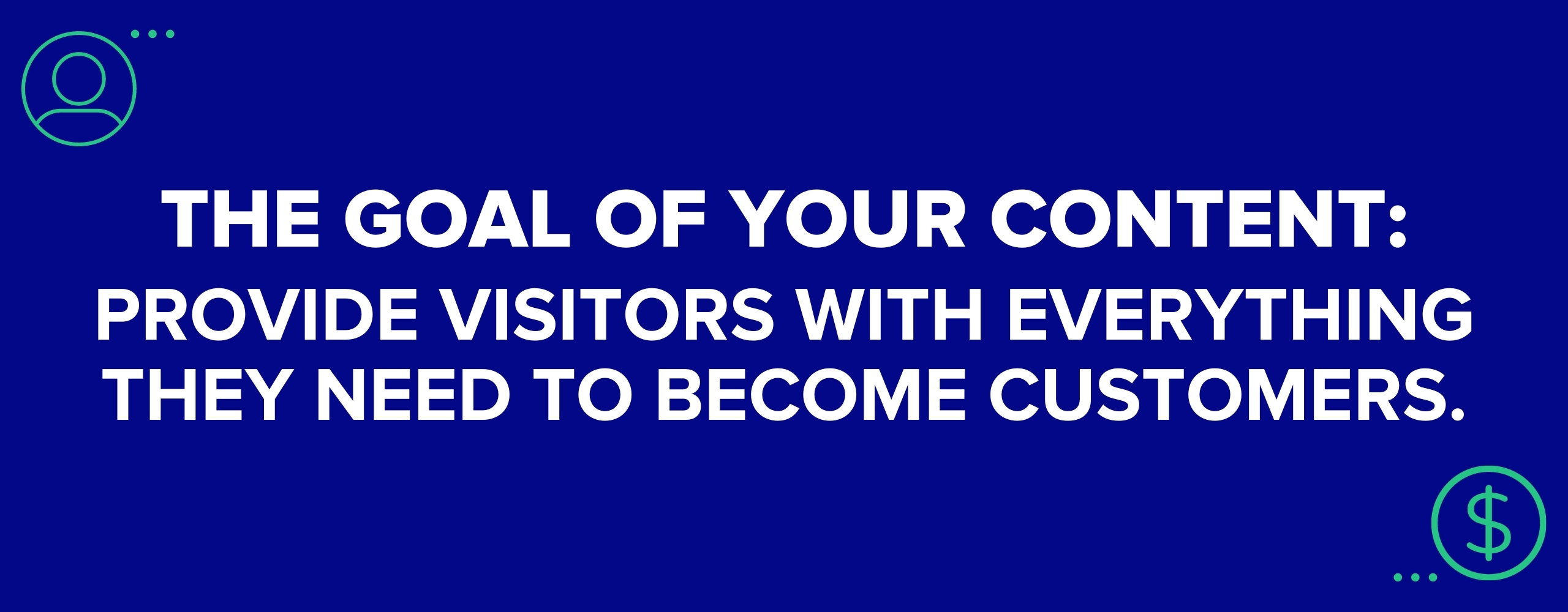
Tools that are interactive help your customers see what making a purchase from you will be like. When you get them to do that, you’re bringing them one big step closer to buying.
But self-selection tools are just one way to think creatively. Don't get stuck in the trap of thinking narrowly about what content can be.
START: Investing in original content
Here’s what happens: A business hires a marketing agency to produce content for them. You know, blog articles, guidebooks, whitepapers. The agency turns around and hires freelancers.
Those freelancers know precious little about your industry. They know even less about your company and your culture.
So what do they do? They research using Google. They use ChatGPT or Jasper.
They pull together content from the same sources as a high school kid writing a term paper.
The result? Derivative content. It’s fine. It’s just, well, meh.
This derivative content you get from an agency is no different than what’s already out there on the internet because it comes from the same sources.
It’s just adding to the noise. Adding to the super-saturation of content. (And, in the age of AI, the noise is just going to keep geting louder.)
Are your potential customers going to read this unoriginal content and say, “Wow, this company really GETS me”?
Not likely.
Are these visitors going to surrender their email addresses so they can read even more?
I mean, would you?
No. This factory approach to content amounts to an expensive game of telephone. You tell your agency something, your agency tells a freelancer. The resulting content is underwhelming — as are the results of your content marketing.
You may see a boost in traffic, but this will flatten out pretty quickly, while very few of your new leads turn into customers.
KEEP: Auditing and improving your conversion paths
Companies put a ton of work into their homepages. As they see it, this is their digital storefront — the first thing a visitor sees.
But think about it: In the age of content marketing, many of your customers are coming to you from organic search. That means they’re landing on articles and blog posts long before they ever see your homepage.
Don’t believe me? Pull your traffic data. Last week at IMPACT, we had 64,219 visitors — only 2,001 of whom saw our homepage.
My point is this: Every single webpage is a potential first impression of your business.
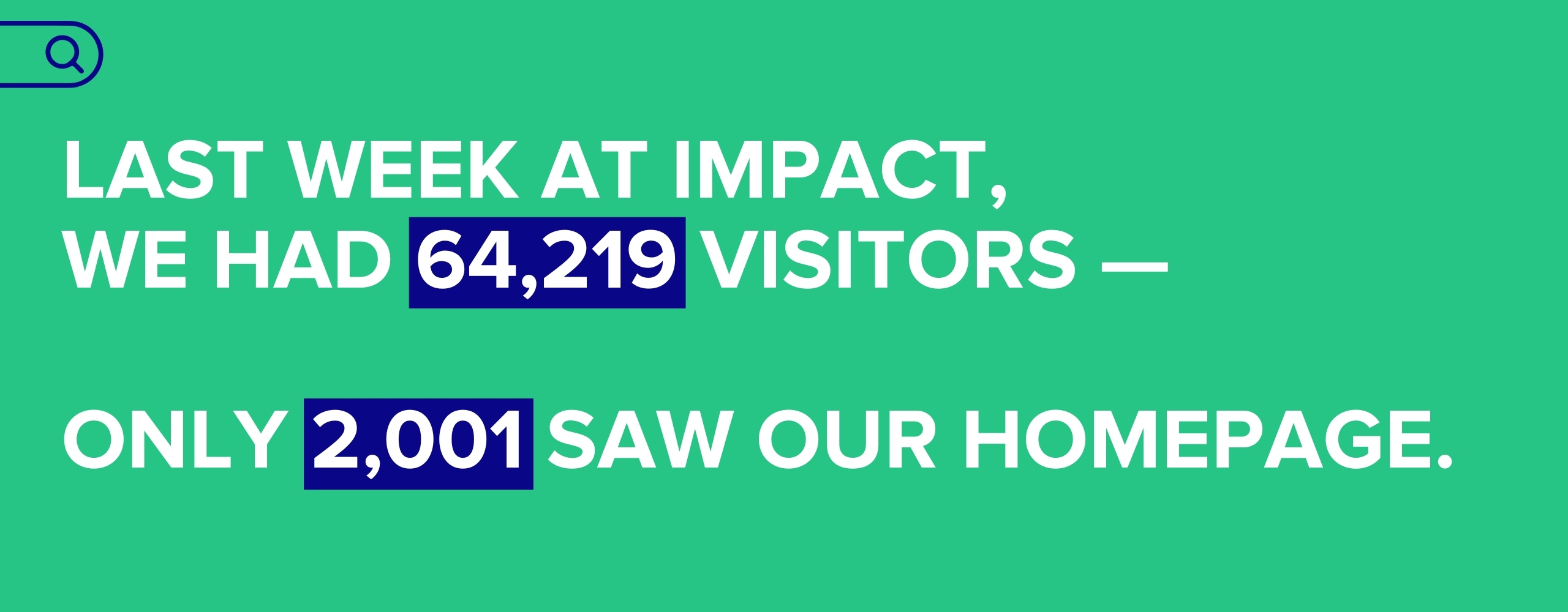
If someone comes to your site through organic search, will they know what to do next?
Here’s what to do:
- Choose 20 high-trafficked blog articles. Look at each as if you are a visitor.
- Identify the “next steps” for your readers. Are there links to relevant articles and videos? Is there an appropriate CTA pointing to a tool, landing page, or sign-up?
- Remove friction. Tighten the copy, eliminate competing offers, and simplify the instructions.
Make this a recurring task for your team. If you want people to convert on your site, make it clear and easy for them to do so.
KEEP: Creating valuable content for your audience
Content marketing works when organizations are willing to provide value to their customers. Content that’s fluffy or slick doesn’t cut it. No one’s raising their hand to download a sales pitch.
Instead, your visitors want unbiased educational content that addresses their fears, worries, and concerns. They want you to answer their questions and make it easy to buy from you.
This kind of trust-building content is vital to successful conversions.
Don’t get mad at your would-be buyers for spurning your content. If you provide enough value, they’ll come. If you don’t, they’ll look elsewhere.
#1 Conversion hack: Treat your buyers like people
Remember, a conversion is a transaction. Visitors give you contact details in exchange for something of value.
The problem is, along the way we started seeing conversions as the goal of our marketing. The result of this mindset is everything we talked about in the beginning: an abundance of sub-par content trying to coax some more conversions in the hope that those conversions are actually hot leads who are eager to buy.
And here we are: Too much content, not enough value.
And site visitors are skeptical. They know that accessing that resource could mean they’ll be spammed with sales emails and nurture campaigns for months.
To optimize your website for conversions in 2024, put your customer first. Craft your copy to speak to their problems. Provide content that delivers real value. And once you get a conversion, don’t shoehorn every new contact into a one-size-fits-all nurture campaign.
Your customers deserve better.
Free: Assessment

